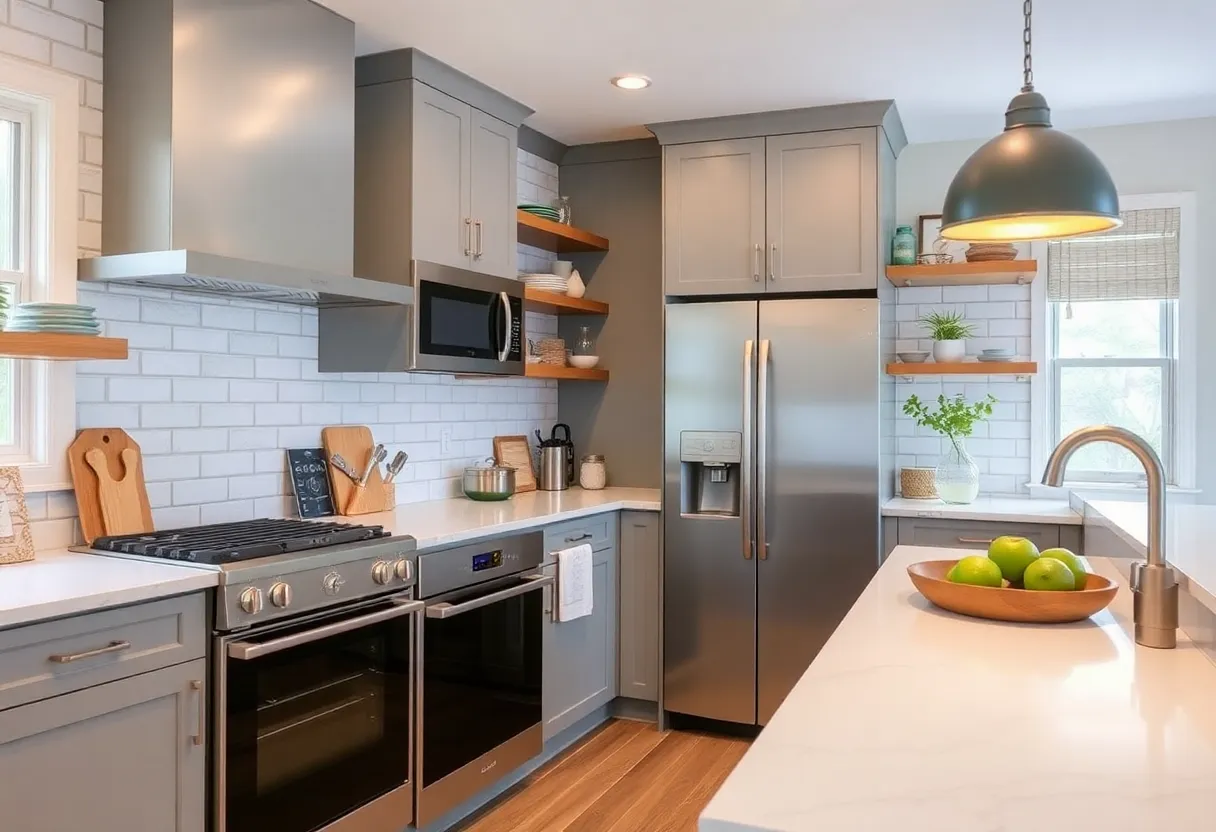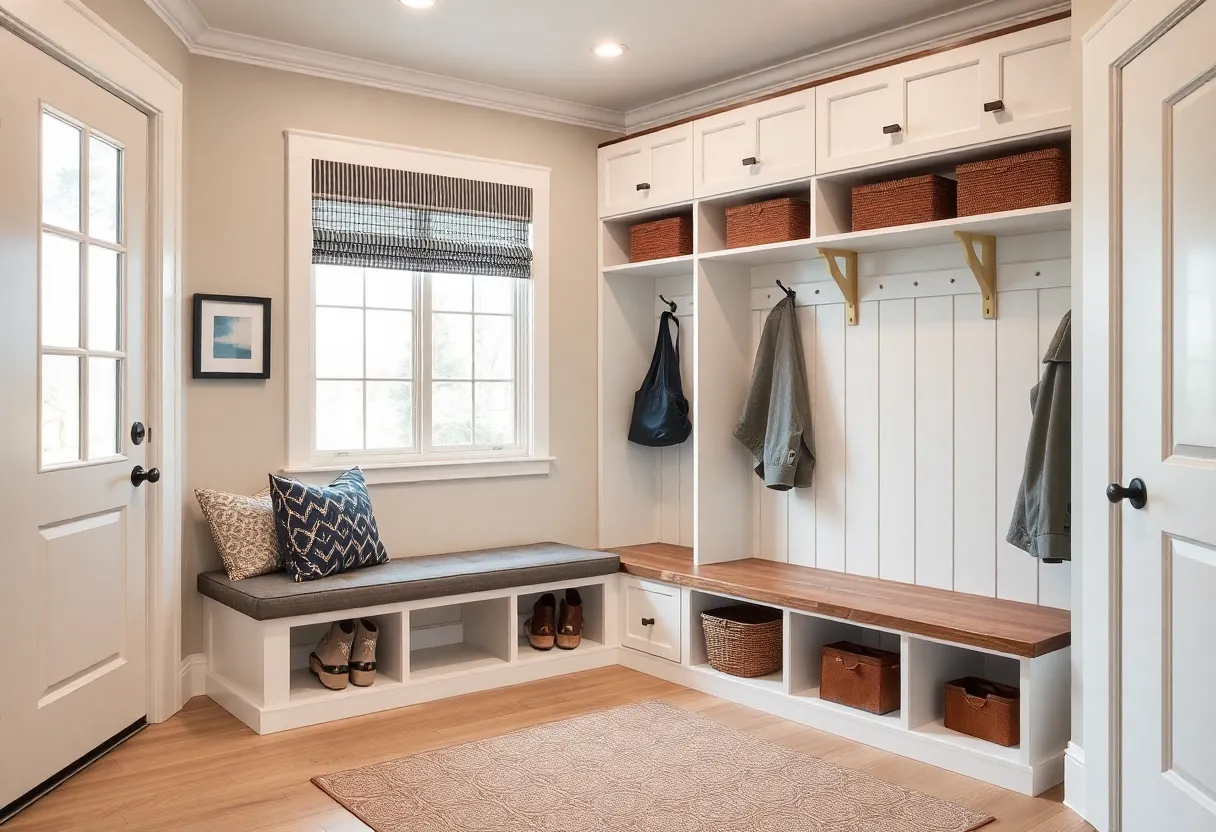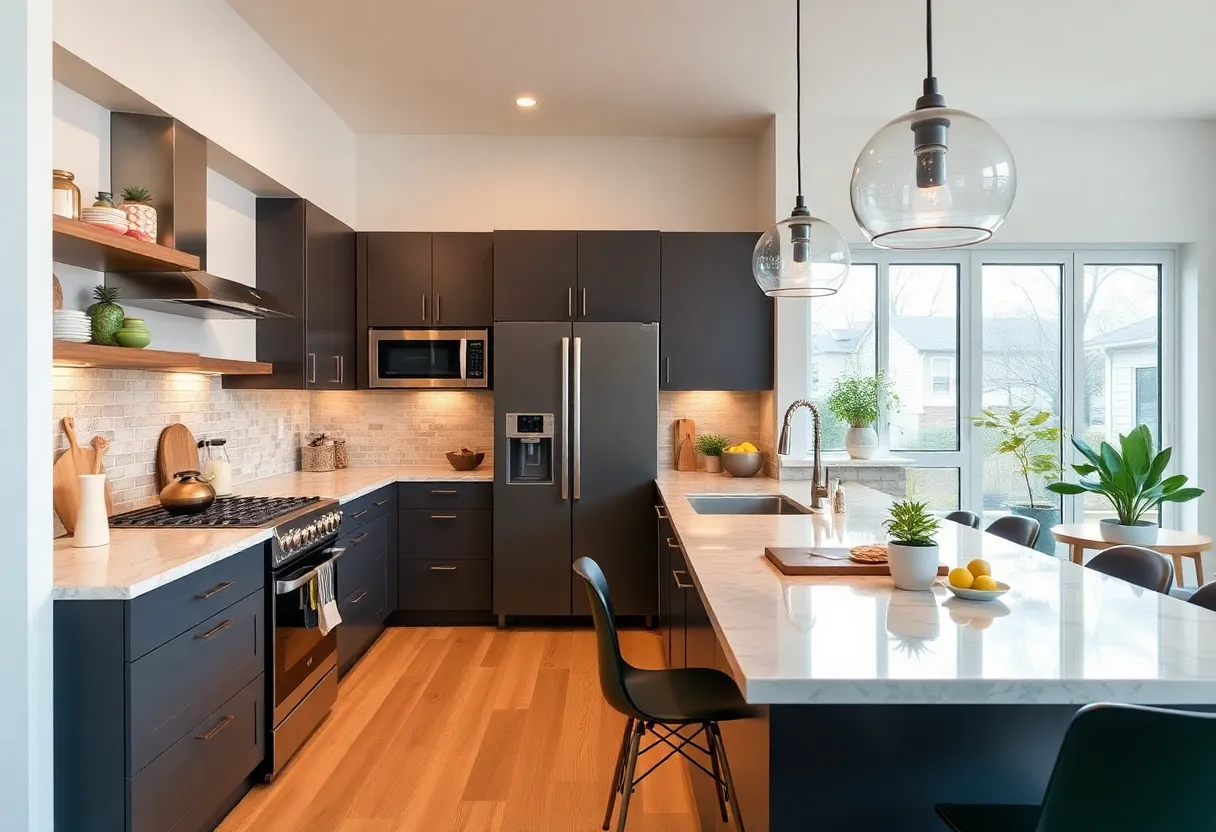What Are the Top Tips for Designing a Functional and Stylish Kitchen?
Creating a kitchen that balances functionality with style is essential for both everyday living and aesthetic appeal. A well-designed kitchen streamlines daily tasks, maximizes space, and reflects personal taste. Achieving this harmony requires adherence to key principles and strategic planning. Below, we outline top tips to guide the process of designing a kitchen that excels in both utility and design.
1. Prioritize Workflow Efficiency
Understanding kitchen workflow is fundamental. The classic work triangle concept — positioning the sink, stove, and refrigerator optimally — minimizes unnecessary movement. Ideally, these elements should be arranged within a compact area to enhance productivity.
Strategic layout choices include:
- U-Shaped and L-Shaped Designs: Offer efficient access to major appliances and prep zones.
- Galley Kitchens: Maximize narrow spaces with parallel counters; ensure enough space between for comfortable movement.
- Open-Plan Spaces: Combine kitchen and living areas, emphasizing flow and accessibility.
Incorporate ample counter space between key stations to ease meal prep and cleanup. Use functional zones: prep, cooking, cleaning, and storage to streamline activities.
2. Maximize Storage Solutions
Effective storage reduces clutter and enhances accessibility. Prioritize concealed storage options to maintain a sleek aesthetic. Incorporate:
- Pull-Out Cabinets: For pot racks, baking sheets, or cleaning supplies.
- Deep Drawers: For utensils, cookware, or food supplies, allowing easy access.
- Cabinet Organizers: Lazy Susans, dividers, and trays to optimize space utilization.
- Vertical Storage: Tall pantry cabinets or open shelves for frequently used items.
Consider under-counter storage for small appliances that are used regularly but clutter counters.
3. Invest in Quality and Appropriate Materials
Material selection influences both style and functionality. Durable surfaces resist wear and are easy to maintain. Essential surface materials include:
- Countertops: Quartz, granite, or solid surface materials combine durability with aesthetic appeal.
- Cabinetry: Solid wood, plywood, or MDF with finishes that withstand humidity and frequent use.
- Flooring: Hard-wearing options like tile, hardwood, or luxury vinyl that resist water and scratches.
Choosing the right materials minimizes repairs and maintains visual appeal over time, contributing to a functional and stylish space.
4. Emphasize Lighting Design
Good lighting enhances both practicality and ambience. A layered approach combines different types of illumination:
- Ambient Lighting: Overhead fixtures provide overall brightness.
- Task Lighting: Under-cabinet lights or pendant fixtures illuminate work surfaces.
- Accent Lighting: Highlights architectural features or decorative elements.
Choose energy-efficient fixtures and dimmable options to adjust lighting based on needs and mood.
5. Focus on Ergonomics and Accessibility
Design with user comfort and ease of access in mind. Key considerations include:
- Counter Heights: Usually around 36 inches to accommodate most users comfortably.
- Pull-Out Shelves and Lazy Susans: Reduce need for bending or reaching into deep cabinets.
- Appliance Placement: Position heavy appliances at waist level for safety and convenience.
- Open Space: Maintain clear walkways, ideally 42–48 inches wide, to prevent congestion.
Prioritize universal design principles to ensure the kitchen remains functional for all users, regardless of age or physical ability.
6. Incorporate Style Through Color and Details
Color schemes influence mood and perception of space. Use light hues to make small kitchens appear larger. Bold colors can make statements if balanced properly with neutral tones.
Details such as hardware, backsplashes, and accents add personality. Select hardware that complements overall style — sleek and modern or vintage and ornate. Backsplashes can be a focal point, made from glass, tile, or metallic finishes.
7. Choose Appliances Wisely
Appliances should be both high-quality and appropriate for your lifestyle. Consider energy efficiency to reduce operational costs and environmental impact. Features to evaluate include:
- Size and Capacity: Match appliances to your cooking needs, kitchen size, and family size.
- Control Layout: User-friendly interfaces aid in smooth operation.
- Integration: Built-in units create a streamlined look and save space.
Omitting overly large appliances in small kitchens preserves space and maintains a clutter-free environment.
8. Maintain Balance Between Modern and Timeless Design
A timeless kitchen resists trends that quickly date the space. Combine modern elements — like sleek cabinetry or smart technology — with classic details such as subway tile backsplashes or farmhouse sinks.
This approach ensures your kitchen remains stylish over years while fulfilling practical needs.
9. Plan for Ventilation and Sustainability
Effective ventilation systems eliminate cooking odors and improve air quality. Range hoods should be appropriately sized and positioned. Consider energy-efficient appliances and LED lighting to enhance sustainability.
Design with natural ventilation and incorporate eco-friendly materials where possible. These choices contribute to a healthier and more efficient kitchen environment.
10. Engage Professionals When Needed
Consulting architects or kitchen designers can provide valuable insights into space planning, material selection, and project management. Their expertise helps prevent costly mistakes and ensures the integration of functional and aesthetic elements.
Workshopping your ideas and collaborating with professionals ultimately results in a more cohesive and tailored kitchen design.
Conclusion
Designing a kitchen that is both functional and stylish requires meticulous planning and a clear understanding of core principles. Prioritize workflow, maximize storage, select durable materials, and focus on lighting and ergonomics. Invest in quality appliances, incorporate timeless design elements, and ensure proper ventilation and sustainability. With a deliberate approach, your kitchen can become a perfect blend of practicality and aesthetic appeal, serving your needs today and for years to come.
Author: STAFF HERE WASHINGTON DC
The WASHINGTON DC STAFF WRITER represents the experienced team at HEREWashingtonDC.com, your go-to source for actionable local news and information in Washington, DC, and beyond. Specializing in "news you can use," we cover essential topics like product reviews for personal and business needs, local business directories, politics, real estate trends, neighborhood insights, and regional news affecting the area—with deep expertise drawn from years of dedicated reporting and strong community input, including local press releases and business updates. We deliver top reporting on high-value events such as the National Cherry Blossom Festival, Kennedy Center Honors, and the Washington Auto Show. Our coverage extends to key organizations like the Greater Washington Board of Trade and Destination DC, plus leading businesses in government contracting and technology that power the local economy such as Lockheed Martin and Amazon. As part of the broader HERE network, we provide comprehensive, credible insights into the dynamic landscape of the Washington metropolitan area.





